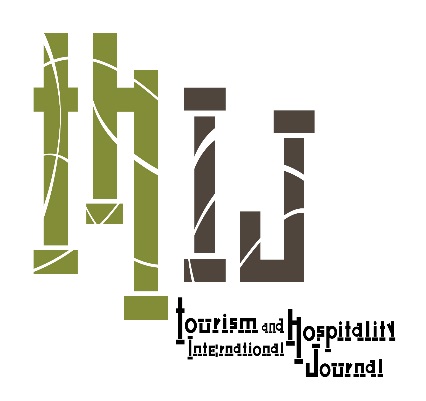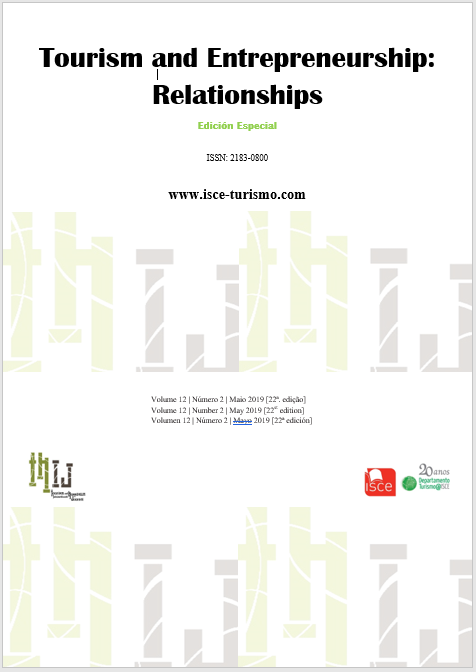Turismo sustentável e desenvolvimento regional: resultados da investigação realizada em empreendimentos turísticos da Argentina e Brasil
DOI:
https://doi.org/10.57883/thij12(2)2019.30530Palavras-chave:
Empreendedorismo, Pluriatividade, Turismo Sustentável, Desenvolvimento RegionalResumo
Este estudo aborda o empreendedorismo em propriedades rurais que trabalham com turismo em dois países: Argentina e Brasil a partir de uma diretriz norteadora para realizar a pesquisa usando os preceitos encontrados no documento Critérios do Conselho Global de Turismo Sustentável, cujo foco está direcionado às empresas turísticas. Além disso analisa as atividades sustentáveis dos empreendimentos, adaptados para a realidade pesquisada, chegando-se, neste estudo, as seguintes dimensões de análise: gestão sustentável; socioeconômica; patrimônio cultural; e ambiental. Tem como objetivo principal avaliar a sustentabilidade de sete empreendimentos turísticos, situados no meio rural, na Argentina e no Brasil. Metodologicamente, a pesquisa é de natureza descritiva, que avaliou 4 empreendimentos na Argentina e 3 no Brasil. Como resultado observa-se que os empreendimentos argentinos, atingiram índices superiores a 70% em 3 indicadores (Gestão Sustentável, Socioeconômica e Ambiental), sendo a maior fragilidade destes empreendimentos os indicadores na dimensão de Patrimônio Cultural (com 37,5%, somente). Em contrapartida os empreendimentos avaliados no Brasil, atingiram mais de 70% dos indicadores somente na Dimensão Ambiental. Esta situação evidencia que os empreendedores dos locais pesquisados, especialmente os brasileiros, podem realizar muitas ações para, então, contribuir efetivamente com a promoção do desenvolvimento regional sustentável.Referências
OMT, (2011). Tourism and sustainability. Acedido a 15/09/2015. Retirado de http://dtxtq4w60xqpw.cloudfront.net/sites/all/files/docpdf/sustain abillity.pdf.
ONU, (2012). Documento final da Conferência sobre o Desenvolvimento Sustentável Rio+20 Acedido a 13/09/2017. Retirado de http://www.un.org/es/comuns/docs/?symbol=A/CONF.216/L.1.
Ceretta, C. C. (2017). As representações sociais nas festas de padroeiros da Quarta Colônia. Tese de Doutoramento. Centro de Ciências Rurais, Universidade Federal de Santa Maria, Santa Maria, RS, Brasil.
Dullius, P., Froehlcich, J. M., Vendruscolo, R. (2008). Identidade e desenvolvimento territorial: Estudo de experiências de indicações geográficas no Estado do RS. Acedido a 9/7/2015. Retirado de http://ageconsearch.umn.edu/bitstream/109985/2/524.pdf.
Sacco dos Anjos, F. & Caldas, N. V. (2012). Pluriatividade, Multifuncionalidade e Turismo Rural. Turismo no espaço rural: Oportunidades e sinergias contemporâneas. Pelotas: Editora da UFPel, 27-54.
Pecqueur, B. (2005). O desenvolvimento territorial: Uma nova abordagem dos processos de desenvolvimento para as economias do Sul. Raízes, 24 (1, 2), 10-22.
Moreira, M. B. (2011). Inovação e empreendedorismo em zonas rurais desfavorecidas. In E. Figueiredo (org.), O rural plural: Olhar o presente, imaginar o futuro. Alentejo: 100LUZ, Universidade de Aveiro, 385-395.
Romero, P. I. S. L. (2006). O papel das redes de gestão na inovação e competitividade do turismo rural. Dissertação de Mestrado. Universidade de Aveiro, Portugal.
Silva, S. & Carvalho, P. (2011). Programas e sistemas de incentivos europeus com incidência na atividade turística em espaço rural: O exemplo do PRIME (Portugal, 2000-2006). In E. Figueiredo (org.), O rural plural: olhar o presente, imaginar o futuro. Alentejo: 100LUZ, Universidade de Aveiro, 315-328.
Gray, D. E. (2012). Pesquisa no mundo real (2ª ed.). Porto Alegre: Penso.
Gil, A. C. (2009). Como elaborar projetos de pesquisa (4ª ed.). São Paulo: Atlas
Global Sustainable Tourism Council (GSTC- D). (2013) Critérios Globais de Turismo Sustentável para Destinos. [S.l.] Acedido a 18/03/2016. Retirado de www.gstcouncil.org.
Downloads
Publicado
Como Citar
Edição
Secção
Licença
Direitos de Autor (c) 2023 This work is licensed under a Creative Commons - Attribution 4.0 International (CC BY 4.0)

Este trabalho encontra-se publicado com a Licença Internacional Creative Commons Atribuição 4.0.
Este trabalho encontra-se publicado com a Licença Internacional Creative Commons Atribuição 4.0.






